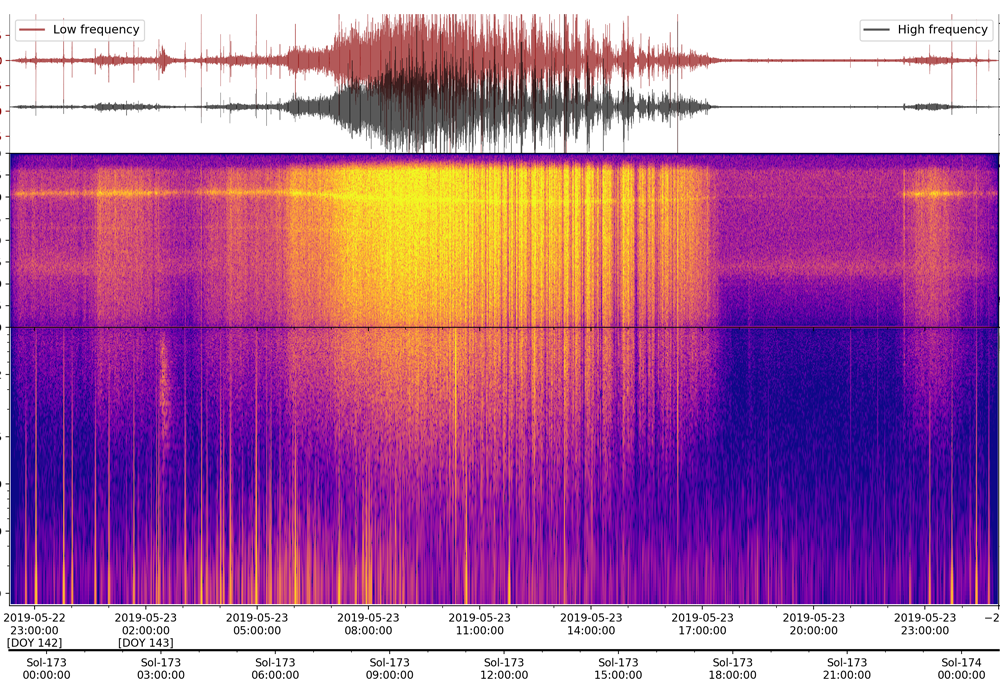As is evident from this website, I have always been a person of multiple interests. I’ve never focused on a single object. I need to vary, to wander. For me, doing the same thing is a bit like being in prison. Clearly, those who focus all their energy on one subject have a lot of chances to succeed in that field. I’ve always criticized myself for dispersing my energies on so many things without ever making a really good one. Then someone pointed out to me that there are also pentathletes and decathletes. It’s a personal trait. And nowadays I have to say it’s been my luck…
Geology
La Terra ha un mantello fatto di uranio? Sarà per questo che fa caldo prima di un terremoto…
/https://www.lescienze.it/images/2020/01/22/115626727-38e93e57-f659-446d-a820-b5705272fd58.jpg) A friend of mine once shared me a link to a press release from the webpage of the Italian edition of Scientific American. The source was the National Institute of Nuclear Physics (INFN). The headline: “Geoneutrinos confirm that we are resting on a mantle of uranium and thorium.” I imagine any geologist would frown a bit at this statement. Why? Because the mantle is not made of uranium and thorium. Plus, this research had not found out that the mantle is composed of uranium and thorium. The research confirmed that most of the Earth’s internal heat comes from the decay of radioactive elements widespread not only in the crust (as already well known) but also in the mantle. Geoneutrinos are subatomic particles, a byproduct of radioactive decay (while neutrinos come form stars for fairly similar reasons).
A friend of mine once shared me a link to a press release from the webpage of the Italian edition of Scientific American. The source was the National Institute of Nuclear Physics (INFN). The headline: “Geoneutrinos confirm that we are resting on a mantle of uranium and thorium.” I imagine any geologist would frown a bit at this statement. Why? Because the mantle is not made of uranium and thorium. Plus, this research had not found out that the mantle is composed of uranium and thorium. The research confirmed that most of the Earth’s internal heat comes from the decay of radioactive elements widespread not only in the crust (as already well known) but also in the mantle. Geoneutrinos are subatomic particles, a byproduct of radioactive decay (while neutrinos come form stars for fairly similar reasons).
Marsquakes Rock and Roll
 Fifty years after Apollo 11 astronauts deployed the first seismometer on the surface of the Moon, NASA InSight’s seismic experiment transmits data giving researchers the opportunity to compare marsquakes to moon and earthquakes.
Fifty years after Apollo 11 astronauts deployed the first seismometer on the surface of the Moon, NASA InSight’s seismic experiment transmits data giving researchers the opportunity to compare marsquakes to moon and earthquakes.
Seismologists operating the Marsquake Service at ETH Zurich literally rocked and rolled as they experienced, for the first time, two “marsquakes” in the university’s quake simulator. Researchers uploaded actual data from marsquakes detected on Martian solar day or Sol 128 and 173.The marsquakes were detected by the SEIS seismometer, whose highly sensitive electronics were delivered by the Aerospace Electronics and Instruments laboratory at ETH.
Not all earthquakes are created equal
 My two cents (2) about the July 2019 Southern California earthquake: recorded Richter magnitude M 7.1. Not bad huh? Pretty “high.” It makes me think sadly to some of our most recent earthquakes in my country, Italy: central Apennines in 2016 and northern Apennines in 2012. The magnitudes recorded were respectively M 6.0 and M 5.9. Seen this way they would seem just a bit weaker but they did a lot of damage and deaths…. I don’t know about you, but it makes me think.
My two cents (2) about the July 2019 Southern California earthquake: recorded Richter magnitude M 7.1. Not bad huh? Pretty “high.” It makes me think sadly to some of our most recent earthquakes in my country, Italy: central Apennines in 2016 and northern Apennines in 2012. The magnitudes recorded were respectively M 6.0 and M 5.9. Seen this way they would seem just a bit weaker but they did a lot of damage and deaths…. I don’t know about you, but it makes me think.
Columbia Goes to the Moon
 Fifty years ago, when astronauts first landed on the moon, they carried not only humanity’s highest hopes but an important experiment from Columbia.
Fifty years ago, when astronauts first landed on the moon, they carried not only humanity’s highest hopes but an important experiment from Columbia.
On the afternoon of July 20, 1969, Gary Latham ’65GSAS, a thirty-three-year-old geophysicist at Columbia’s Lamont-Doherty Geological Observatory, arrived at NASA’s Manned Spaceflight Center (now the Johnson Space Center) in Houston to witness the fulfillment of thousands of years of curiosity and wonder: humanity’s first attempt to land men on the moon…
The nightmare of teaching science in Italian schools
 I am now coming out of a short teaching experience in an international school in Italy. For a year I taught science and geography in their middle school. Today is my last day and while the kids are relaxing in their own way I am reflecting on a few things that this short experience has brought to my mind. Starting with the last one: all the kids, indiscriminately, relax using their mobile phones. One of my generation is immediately reminded of how we would have done, 45 years ago in middle school, to relax in an hour left free for leisure. I used to draw. Nobody had computers at home. Very rarely there were the first, now ridiculous, electronic games. I never had a game console in my entire life.
I am now coming out of a short teaching experience in an international school in Italy. For a year I taught science and geography in their middle school. Today is my last day and while the kids are relaxing in their own way I am reflecting on a few things that this short experience has brought to my mind. Starting with the last one: all the kids, indiscriminately, relax using their mobile phones. One of my generation is immediately reminded of how we would have done, 45 years ago in middle school, to relax in an hour left free for leisure. I used to draw. Nobody had computers at home. Very rarely there were the first, now ridiculous, electronic games. I never had a game console in my entire life.
